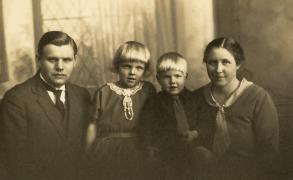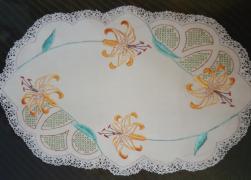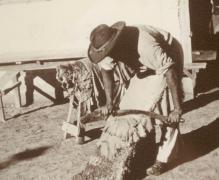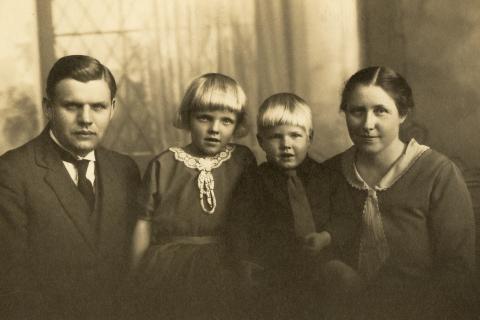Pastor F.W Albrecht and his wife, Minna, arrived at Hermannsburg on 19 April 1926 and stayed until 1952, when they moved to Alice Springs due to Minna’s poor health. They inherited a mission that had been without a head missionary for several years and that was struggling with insufficient funds and unreliable water resources. He faced a huge challenge to make the mission more self-sufficient.
Problems with the wage system instituted after Stolz’s review
Albrecht observed, soon after arriving, that there were problems with the system of paying wages.
“For instance, a worker on receiving his wages for four weeks work would purchase a 150lb bag of flour, as well as tea and sugar and return to his camp. Within a few days, all his real and tribal relatives would come and claim their share. Soon little remained for the weeks ahead until further wages were received. On several occasions women came to our door saying they were exhausted and could not continue because they had nothing to eat.”
F.W. Albrecht in Leske (ed) 2016:43
Albrecht reverted to the previous system of feeding the sick, the women and children three meals a day. Albrecht’s early tenure was characterised by the tight economic resources of the mission and he recalls that the future of the mission was dire with inadequate income, the bank unwilling to allow further credits, disputes with the manager over the ownership of cattle, and the shaky economic future of the cattle enterprise anyway, which was once again suffering under the drought conditions.
Finding paid work for men
The whole point of providing work-based training was to find jobs in the local area for the Aboriginal mission residents and to undertake activities at the mission that generated income. Various initiatives were trialled in addition to the cattle station operations. Some of these were more successful than others. They included: brush-making, needlework, salt collection, tanning of skins, production of products such as belts, rugs and boots from the tanned hides.
Brush making used horse hairs from the mission horses and wood from packing crates. However, this proved a dismal failure as people found it extremely boring, and in addition little market research appears to have informed the start of this enterprise as Albrecht recalls that:
“Several consignments were sent south for sale among church organisations, but the article was not received with much enthusiasm.”
F.W. Albrecht in Leske (ed) 2016:44
Work was secured for some of the mission’s men on road work gangs north of Alice Springs, but this opportunity ended suddenly when unions objected to the use of Aboriginal labour. One of Albrecht’s more successful ventures was the establishment of a tannery processing kangaroo and cow skins and at a later stage even crocodile and snakeskin.
Paid Work for Women
Needlework was already an activity that some of the mission women undertook and Mrs Albrecht took over the sale of the items produced and the distribution of proceeds back to the women. The work was of high standard and found a ready market down south. Mrs Albrecht also started a women’s group making possum skin rugs and blankets.
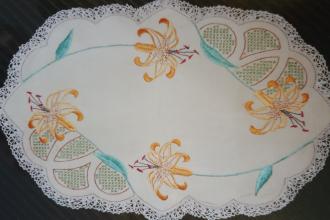
Media
